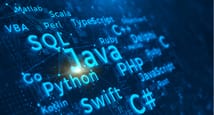- Learn what machine learning is and meet Sebastian Thrun
- Find out where machine learning is applied in technology and science
Introduction to Machine Learning Course
Quick Facts
| particular | details | |||
|---|---|---|---|---|
|
Medium of instructions
English
|
Mode of learning
Self study
|
Mode of Delivery
Video and Text Based
|
Course overview
The Introduction to Machine Learning Course is a part of the Data Analyst Nanodegree. The candidate can opt for that course after the completion of this one. The Introduction to Machine Learning Course provided is of the intermediate level. It will teach the end-to-end procedure and functioning of investigating data with the help of the machine learning lens. The course curriculum is based on self-paced learning. The Introduction to Machine Learning Course syllabus contains ten modules in total. The candidate will be given an Introduction to Machine Learning Course at the end of the course completion. The entire course will be taught by the industrial experts, along with complete training for each concept.
The highlights
- Free - self-paced learning course
- Offered by the Udacity
- Taught by the industrial professionals
- Ten modules curriculum
Program offerings
- Learning material
- Lectures
- Training
- Learning by doing exercises
- Quizzes
- Project.
Course and certificate fees
Type of course
Free
Introduction to Machine Learning Course fees
Particulars | Amount |
Course fee | Nil |
certificate availability
No
Eligibility criteria
Education
The candidate needs to have basic knowledge about Python and Statistics for applying to the Introduction to Machine Learning course. If a candidate didn’t have the basic knowledge about these aspects, then they have to first complete the introductory course among Intro to Python Programming, Inferential Statistics, and Descriptive Statistics, and then they can apply in the course.
What you will learn
By the end of the Introduction to Machine Learning Course programme, the candidate will learn the following concepts -
- A few of the essential machine learning methods will be taught to students, as well as how to extract and select valuable characteristics that best reflect their data
- They will comprehend the procedure for evaluating the performance of machine learning algorithms
- They will practice applying learning in a mini-project in which they will eliminate residuals from a real dataset and reimplement their regressor
- During the course, the technique for eliminating outliers to enhance the quality of linear regression predictions will be taught
- They will learn to distinguish between unsupervised and supervised learning
- Students will learn to implement the K-means with Python in programming
- Enrolled candidates will make their own decision tree using Python
- They would learn about the formulas for entropy in the middle of the course
The syllabus
Lesson 1: Welcome to the machine learning
Lesson 2: Naive Bayes
- Use Naive Bayes with scikit learn in python
- Calculate the posterior probability and the prior probability of simple distributions
- Splitting data between training sets and testing sets with scikit learn
Lesson 3: Support vector machines
- Learn the simple intuition behind support vector machines
- Identify how to choose the right kernel for your SVM and learn about RBF and linear kernels
- Implement an SVM classifier in SKLearn/scikit-learn
Lesson 4: Decision trees
- Code your own decision tree in python
- Implement a mini-project where you identify the authors in a body of emails using a decision tree in Python
- Learn the formulas for entropy and information gain and how to calculate them
Lesson 5: Choose your own algorithm
Decide how to pick the right machine learning algorithm among K-Means, Adaboost, and decision trees
Lesson 6: Datasets and questions
- You'll be investigating one of the biggest frauds in American history
- Apply your machine learning knowledge by looking for patterns in the Enron email dataset
Lesson 7: Regression
- Code a linear regression in Python with scikit-learn
- Understand how continuous supervised learning is different from discrete learning
- Understand different error metrics such as SSE, and R Squared in the context of linear regressions
Lesson 8: Outliers
- Remove outliers to improve the quality of your linear regression predictions
- Apply your learning in a mini-project where you remove the residuals on a real dataset and reimplement your regressor
- Apply your same understanding of outliers and residuals on the Enron Email Corpus
Lesson 9: Clustering
- Identify the difference between unsupervised learning and supervised learning
- Apply your knowledge of the Enron Finance Data to find clusters in a real dataset
- Implement K-Means in Python and Scikit Learn to find the center of clusters
Lesson 10: Feature scaling
- Use a min max scaler in sklearn
- Understand how to preprocess data with feature scaling to improve your algorithms
Lesson 11: Feature Selection
Lesson 12: Text Learning
Lesson 13: PCA
Lesson 14: Validation
Lesson 15: Evaluation Metrics
Lesson 16: Tying It All Together
Lesson 17: Final Project
Admission details
Follow the procedure to enroll in the Introduction to Machine Learning Course -
Step 1: For the detailed and complete course information, follow the below-mentioned link https://www.udacity.com/course/intro-to-machine-learning--ud120
Step 2: Select the “start free course” option.
Step 3: Sign in with any social account, such as Google or Facebook. If the applicant is not already registered, he or she should first sign up at Udacity.
Step 4: After logging in, the candidate's classroom will be updated with the course.
Step 5: The enrolling process is complete.
Filling the form
As such, there is no application procedure in regards to this programme. Candidates just join in with any social account, and the curriculum will be added to their classroom.
Scholarship Details
In terms of the Introduction to Machine Learning Course, Udacity offers a variety of scholarships. There are 10 scholarship options available to students in total. Before applying for any scholarship, the candidate should review the qualifying requirements. Candidates can check the page https://www.udacity.com/scholarships to see whether they meet the qualifying requirements for the scholarship.
How it helps
During the course, the applicant will receive an Introduction to Machine Learning Course benefit as part of the curriculum, which industry professionals teach. The candidate will get career help and assistance during the course, and Udacity will keep them updated on available opportunities after the training is completed. Furthermore, the applicant will have Introduction to Machine Learning Course benefits to learn about the dynamics of the field, and they will study in line with that, making the candidate's job prospects brighter.
Instructors
FAQs
Will the student get career assistance during the course?
No, during this course, no career assistance is provided. When the candidate is promoted to the nano degree programme, they will get complete career assistance.
Is there any prerequisite for the programme?
Yes, the candidate needs to have elementary knowledge about statistics and python for enrolling in the course.
If a student wants to enroll in a scholarship, how does he or she do so?
The candidate must apply for the scholarship they wish to apply for, and Udacity will cross-check the individual's eligibility.
Articles
Popular Articles
Latest Articles
Similar Courses


Machine Learning in the Enterprise
Google via Coursera


Supervised Machine Learning Regression
IBM via Coursera


Using R for Regression and Machine Learning in Inv...
Sungkyunkwan University, Seoul via Coursera


Unsupervised Machine Learning
IBM via Coursera


Introduction to Machine Learning in Sports Analyti...
UM–Ann Arbor via Coursera


Guided Tour of Machine Learning in Finance
NYU via Coursera


TensorFlow on Google Cloud
Google via Coursera


Unsupervised Learning
Georgia Tech via Udacity


Machine Learning for Trading
Georgia Tech via Udacity
Courses of your Interest

Salesforce Administrator and App Builder
SkillUp Online via Simplilearn

Introduction to Medical Software
Yale University, New Haven via Coursera

Google Cloud Architect Program
Google Cloud via SkillUp Online

Google Cloud Architect Program
Google via SkillUp Online

Information Security Design and Development
Coventry University, Coventry via Futurelearn

Ethics Laws and Implementing an AI Solution on Mic...
CloudSwyft Global Systems, Inc via Futurelearn

Network Security and Defence
Coventry University, Coventry via Futurelearn

Cyber Security Foundations Start Building Your Car...
EC-Council via Futurelearn

Applied Data Analysis
CloudSwyft Global Systems, Inc via Futurelearn
More Courses by Udacity

Linear Algebra Refresher
Udacity

How to Build a Startup
Udacity

Software Debugging
Udacity

Full Stack JavaScript Developer
Udacity

Security Analyst
Udacity

Security Engineer
Udacity


 Brochure
Brochure Enquire
Enquire












